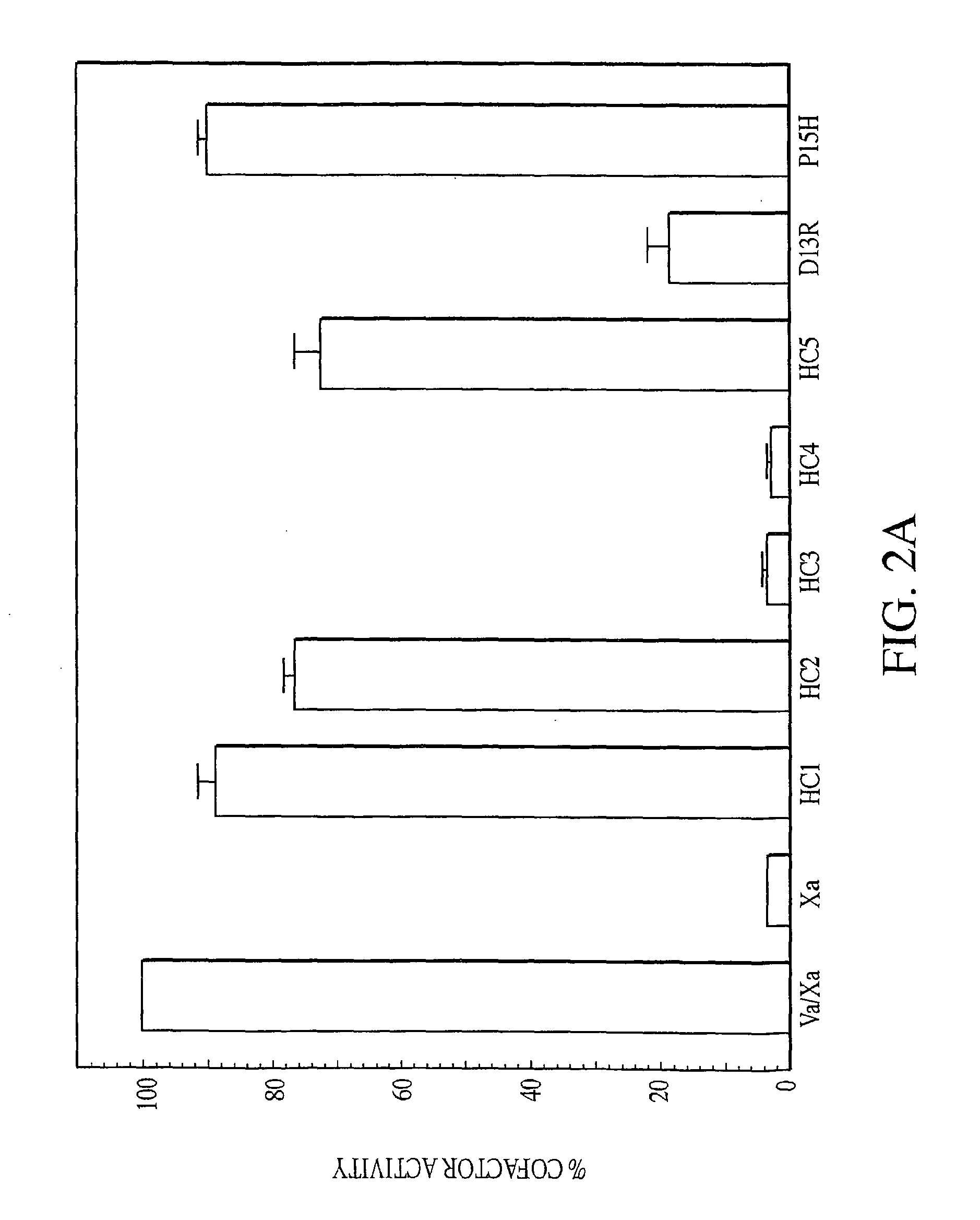Exosite-directed thrombin inhibitors
a thrombin inhibitor and exosite technology, applied in the direction of drug compositions, peptide/protein ingredients, extracellular fluid disorder, etc., can solve the problems of pulmonary emboli, occlusion of venous blood vessels, heart attacks, strokes and peripheral ischemia, etc., to inhibit thrombin generation and inhibit thrombin generation
- Summary
- Abstract
- Description
- Claims
- Application Information
AI Technical Summary
Benefits of technology
Problems solved by technology
Method used
Image
Examples
Embodiment Construction
[0048]The process of blood coagulation can be separated into three phases: initiation, propagation and termination. Initiation begins when tissue factor (TF) is released into the bloodstream. TF activates factor X to factor Xa. Factor Xa cleaves prothrombin to form thrombin, which is a major component in the coagulation process. Thrombin activates factor V to factor tor Va. Factors Xa and tor Va bind to each other and to prothrombin to form a prothrombinase complex that, in the presence of calcium (Ca2+) and phospholipids, accelerates the cleavage of prothrombin to thrombin. The essence of propagation is this rapid creation of thrombin. Termination involves the inactivation of the coagulation process.
[0049]The TF pathway is thought to proceed by assembly of three distinct complexes. The first is the extrinsic tenase (factor VIIa and the membrane-bound cofactor TF), which assembles when TF, normally sequestered from contact with the plasma portion of blood, encounters circulating fac...
PUM
| Property | Measurement | Unit |
|---|---|---|
| pH | aaaaa | aaaaa |
| body weight | aaaaa | aaaaa |
| insoluble | aaaaa | aaaaa |
Abstract
Description
Claims
Application Information
 Login to View More
Login to View More - R&D
- Intellectual Property
- Life Sciences
- Materials
- Tech Scout
- Unparalleled Data Quality
- Higher Quality Content
- 60% Fewer Hallucinations
Browse by: Latest US Patents, China's latest patents, Technical Efficacy Thesaurus, Application Domain, Technology Topic, Popular Technical Reports.
© 2025 PatSnap. All rights reserved.Legal|Privacy policy|Modern Slavery Act Transparency Statement|Sitemap|About US| Contact US: help@patsnap.com



